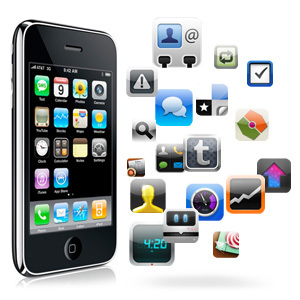App translation is becoming a “must”
Medical Pharmaceutical Translations • Nov 3, 2014 12:00:00 AM

Think you have all your translation needs covered? You may need to think again. As more and more people are getting smartphones and tablets, they’re also downloading apps. If you or your company has created one of those, and you’re looking to make a hit internationally, well…I guess you can see where this is going.
Not all apps are translated into other languages, of course, and ultimately, if people really want or need to use one, in many cases, they’ll do what they have to, to get past the language barrier. Optimists might even see it as a way to learn English, or improve their vocabulary (in a retro version of this, I know a lot of people who’ve done just this with video games). But let’s face it: most of us would prefer to take the easy route, and linguistically speaking, that means dealing with your mother tongue. International customers may not just have to deal with it, either: with the explosion of companies and individuals creating apps (it’s estimated that there are nearly a million apps out there now, give or take), it may only be a matter of time before someone comes up with something that’s similar to yours, but available in their preferred language.
So maybe you’re thinking, okay, translating my app is something I should look into, but I don’t know where to start. Not to worry. This excellent and informative article has a great breakdown of languages you might want to target, and why. It even makes a difference between the language versions you’ll likely need if you want to make money from your app, versus those you’ll need if you just want to put it out there internationally.
Not only are these lists helpful; they’re also intriguing. For example, in addition to helping you choose what languages to translate your app into, they also show that there are certain cultures that are less likely to pay for an app than others. I was surprised to see that French-speakers are among the paying groups. I can’t speak for other francophone cultures, but here in France, most people tend to find loopholes that get them out of paying for anything, from over-the-counter medicines, to TV box sets (watching shows online via unlicensed streaming sites is legal here). But I guess it goes to show how important it is to study the markets you want to break into.
And that brings up another issue. As I’ve mentioned before, just translating from one language to another isn’t enough. You have to think about localization – that is, adapting your content to a particular market. Feeling overwhelmed again? This article has good explanations and checklists of things to consider when adapting an app to another market. In some cases, that may involve tech-related tasks like making layout changes. But when it comes to language, the best person to help you is a professional translator who knows your culture and the culture(s) you’re translating into. That’s why, even in this technology-driven domain, an old-school translator – that is, a living, breathing person — beats a ‘bot every time.
#multilingual #translations #internationalmarketing #iphoneapplications #aiatranslations
